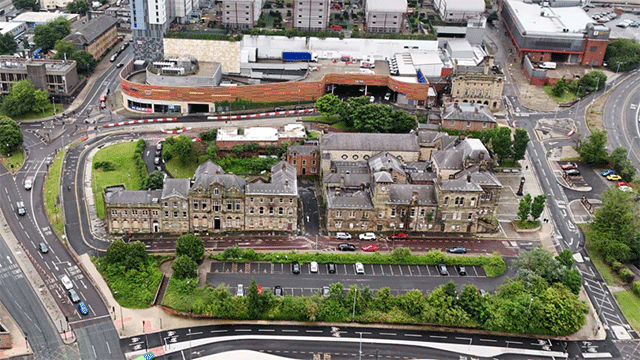Some of the best preserved historic landscape areas are to be seen in the uplands of England and Wales. A report(*) from the Council of British Archaeology warns, however, that these landscapes are threatened. Large tracts of upland Britain were occupied and cultivated at various times in the past when climatic conditions were more favourable than they are today. During the Bronze Age (c2000-800BC), for instance, the growing season was up to six weeks longer than at present.
The report stresses both the quality and quantity of those remains. Nowhere else in Britain, says the report’s author, Dr Timothy Darvill, is it possible to find prehistoric fields with their original gateposts still in position. On Dartmoor nearly 3,000 acres of prehistoric field systems remain visible, and the lengths of field boundary earthworks that have been identified total more than 125 miles.
Archaeologists are worried that much of the evidence is now at risk. The report gives examples of works to improve agricultural land and facilities which have caused irreparable damage to ancient landscapes. Outside National Parks such operations are not usually checked in advance for their impact on the many sites which lack statutory protection. Much of the work is not covered by planning control, and it may be supported by government grants.
Forestry is identified as another problem. Although the Forestry Commission is praised for adopting a more positive approach to archaeology in recent years, concern is voiced about the future scale of private forestry and the emergence of timber growing as an alternative to other agricultural uses on marginal land. Deep ploughing in advance of planting and the need to build roads and bulldoze rides and firebreaks are all identified as being harmful to archaeological remains. Mineral extraction, quarrying, reservoirs, and erosion caused by visitors who scour away the fragile cover of soil are cited as further threats.
Dr Henry Cleere, Director of the Council for British Archaeology, believes that many of the losses could be averted if farmers and landowners were to be made more aware of the significance of features on their land, and if archaeologists were consulted in advance about works which are potentially harmful. “We accept that the future of archaeological landscapes can only be assured within the context of a modern, working landscape. This is why many of the recommendations in the report urge an improvement in co-operation between existing archaeological organisations, government departments and farming and wildlife interests.”
The report identifies a major weakness in present arrangements whereby the responsibilities of English Heritage and its Welsh counterpart, Cadw, are geared chiefly to monuments under statutory protection. Dr Darvill points out that around 90% of sites in the uplands are unprotected, with the result that farmers and landowners find it difficult to obtain good management advice. “In many cases a farmer may not even be aware of it either. The present system protects a handful of sites by law, backed by penalties, and leaves the rest to chance. We would like to see more emphasis on measures for positive conservation management over large areas, so that problems can be identified and averted before they materialise.
(*) Upland Archaeology: What future for the past by Timothy Darvill. Council for British Archaeology, 112 Kennington Road, London SE11 6RE. £3.25.










